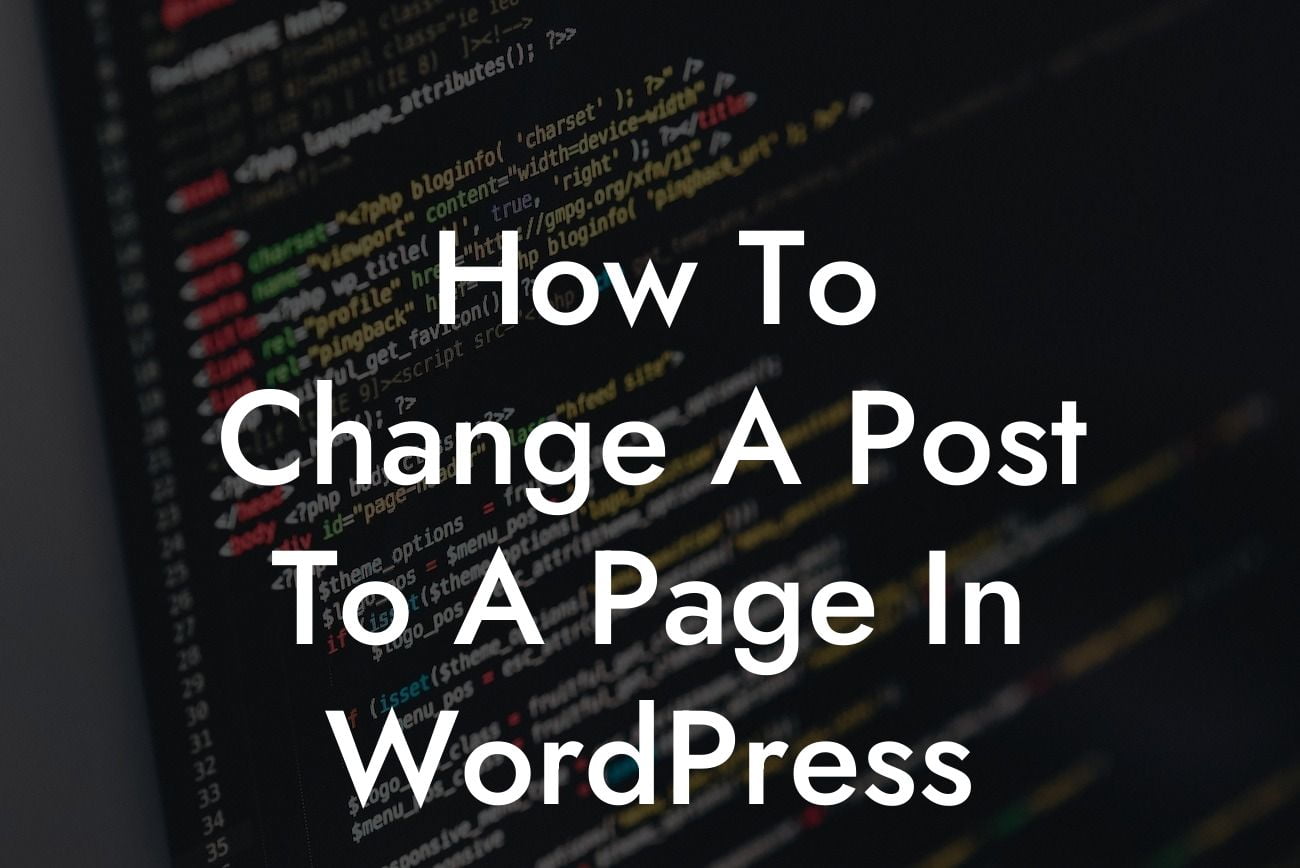Changing a post to a page in WordPress might seem like a daunting task, especially if you're new to the platform. But fear not! In this guide, we will show you exactly how to make this transition seamlessly. Whether you're a small business owner or an entrepreneur, this tutorial is designed exclusively for you. Say goodbye to cookie-cutter solutions and embrace the extraordinary with DamnWoo.
Before we dive into the steps, let's understand the difference between a post and a page in WordPress. Posts are dynamic entries that are generally displayed in a reverse chronological order on your website's blog page. On the other hand, pages are static and more suitable for timeless content like 'About Us' or 'Contact' pages.
So, why would you want to change a post to a page? There could be several reasons. Perhaps you want to convert an insightful blog post into a more permanent page on your site. Or maybe you've realized that a particular piece of content would better serve your audience as a stand-alone page. Whatever the reason, the process is quite simple. Here's what you need to do:
1. Login to your WordPress dashboard and navigate to the "Posts" section. You'll find this option on the left-hand side of your screen.
2. Locate the post you want to convert and click on it to open the editor.
Looking For a Custom QuickBook Integration?
3. Once the post editor is open, locate the "Copy" button in the right-hand corner of your screen. Click on it to copy all the content from the post.
4. Next, go to the "Pages" section in your WordPress dashboard. This option is also located on the left-hand side of your screen.
5. Click on "Add New" to create a new page.
6. Give your page a suitable title and paste the copied content into the editor.
7. After making any necessary adjustments to the content, including formatting and adding images if needed, click on the "Publish" button to save your changes.
How To Change A Post To A Page In Wordpress Example:
To help you better understand the process, let's consider a realistic example. Imagine you have a post titled "Top 10 Tips for Running a Successful Small Business." After analyzing your website's analytics, you realize that many visitors are accessing this post directly and finding it helpful. In light of this, you decide to convert it into a dedicated page called "Small Business Tips."
Following the steps outlined above, you would copy the content from the post and create a new page with the title "Small Business Tips." After making necessary adjustments to fit the new page format, you publish the page. Now, visitors can access this valuable content directly as a stand-alone page.
Congratulations! You now know how to change a post to a page in WordPress. By converting relevant posts into permanent pages, you can cater to your audience's needs more effectively. Remember, DamnWoo is here to support you on your journey to online success. Don't forget to explore our other guides, try our awesome plugins, and share this article with others who might find it helpful. Together, let's elevate your online presence and supercharge your success!
[CTA: Explore our awesome WordPress plugins at DamnWoo.com]













